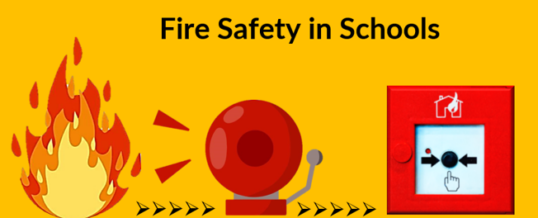
Fire is one of the most common hazards that can cause serious damage to life and property in schools. According to the National Disaster Management Authority (NDMA), there have been several incidents of fire accidents in schools across India, resulting in loss of lives, injuries and trauma among students and staff. Therefore, it is essential for schools to take preventive measures and ensure fire safety in their premises.
One of the key steps to ensure fire safety in schools is to conduct regular fire safety audits and drills. A fire safety audit is a systematic assessment of the fire risks and hazards in the school building and premises, and the adequacy of the fire prevention and protection measures. A fire safety drill is a simulated exercise that tests the preparedness and response of the school community in case of a fire emergency.
Here are some tips on how to conduct fire safety audits and drills in schools:
- Appoint a fire safety committee or coordinator who will be responsible for planning, conducting and monitoring the fire safety audits and drills. The committee or coordinator should ideally include representatives from the school management, staff, students, parents and local fire department.
- Conduct a fire safety audit at least once a year or as per the local regulations. The audit should cover all aspects of fire safety, such as sources of ignition, combustible materials, electrical wiring, appliances, equipment, furniture, exits, staircases, corridors, doors, windows, ventilation, fire alarms, extinguishers, sprinklers, hoses, hydrants, etc. The audit should also identify the potential fire hazards and risks, and suggest corrective actions to eliminate or reduce them.
- Prepare a fire safety plan based on the findings of the audit. The plan should include the roles and responsibilities of the school staff and students during a fire emergency, the evacuation routes and assembly points, the communication system and procedures, the emergency contact numbers, the training and awareness programs, etc.
- Conduct a fire safety drill at least twice a year or as per the local regulations. The drill should involve all the members of the school community and simulate a realistic fire scenario. The drill should test the effectiveness of the fire safety plan, the functioning of the fire detection and suppression systems, the coordination and cooperation among the school staff and students, the evacuation speed and orderliness, etc.
- Evaluate the performance and outcomes of the fire safety audit and drill. The evaluation should measure the strengths and weaknesses of the fire safety measures and practices in the school, identify the gaps and challenges faced during the audit and drill, document the lessons learned and best practices followed during the audit and drill, provide feedback and recommendations for improvement, etc.
By conducting regular fire safety audits and drills in schools, we can ensure that our schools are safe from fire hazards and that our students and teachers are prepared to deal with any fire emergency. Fire safety is not only a legal obligation but also a moral duty for every school. In addition to conducting regular fire safety audits and drills, schools can also benefit from working with a professional safety audit and training company. Such companies have the expertise and experience to help schools assess their fire risks, develop and implement fire safety plans, and provide training to staff and students on fire prevention and response. By working with a professional safety audit and training company, schools can ensure that they are taking all necessary steps to protect their students, staff, and property from the dangers of fire.
JUL
2023
